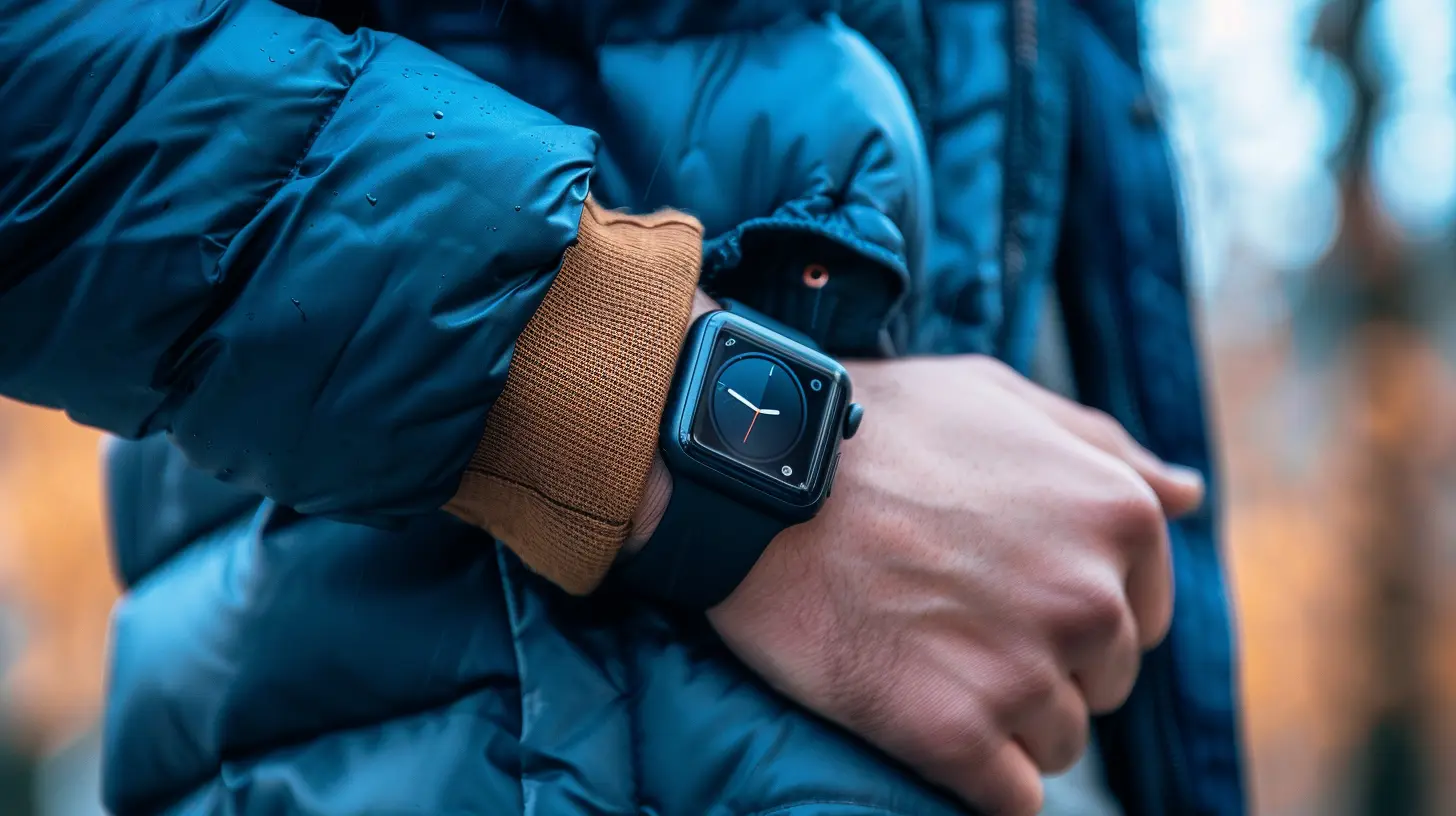The Intersection of Wearable Tech and Blockchain Technology
19 June 2025
Technology keeps evolving, and two of the hottest trends right now are wearable technology and blockchain technology. Individually, they have reshaped industries—from fitness and healthcare to finance and cybersecurity. But what happens when you bring them together? Well, that’s where things get really exciting!
In this article, we’ll dive deep into how wearable tech and blockchain are merging, what benefits they bring, and what the future might hold. 
Understanding Wearable Technology
Wearable technology refers to smart electronic devices worn on the body, designed to collect data, enhance convenience, or improve health and wellness. Some common examples include:- Smartwatches – Think Apple Watch, Fitbit, or Samsung Galaxy Watch. These track your steps, heart rate, and even monitor your sleep.
- Fitness Trackers – Devices like Fitbit Charge or Xiaomi Mi Band help users stay active and manage their fitness goals.
- Smart Glasses – Google Glass, Meta’s AR glasses, and similar devices enhance experiences with augmented reality.
- Smart Clothing – Some athletic brands have introduced shirts and shoes that track movement and muscle activity.
Wearables are everywhere, and they’re only getting smarter! 
What is Blockchain Technology?
Before we talk about how blockchain fits into wearables, let’s quickly break down what blockchain is.Blockchain is a decentralized, secure, and transparent digital ledger that records transactions. It eliminates the need for intermediaries like banks or centralized authorities. Some key features include:
- Security – Every transaction is encrypted, making it nearly impossible to alter.
- Transparency – Anyone with permission can access and verify records.
- Decentralization – Instead of being stored in one location (like a bank’s database), blockchain data is distributed across multiple nodes.
Most people associate blockchain with cryptocurrencies like Bitcoin or Ethereum, but its applications go far beyond crypto. It’s now being used for healthcare, supply chain management, voting systems, and even wearable technology! 
How Blockchain is Revolutionizing Wearable Technology
Wearable technology already collects tons of data. From your heart rate and steps to sleep patterns and glucose levels, these devices monitor everything. But there’s one huge problem—data security and privacy.1. Improving Data Security & Privacy
Wearable devices collect sensitive personal data, and most of it is stored on centralized cloud servers. This makes them a prime target for hackers. Remember the Fitbit data breach? Thousands of user accounts were compromised.Here’s where blockchain comes in! Since blockchain is decentralized and encrypted, it offers enhanced security for wearable devices. Instead of storing your fitness data on a company’s server, blockchain keeps it anonymized and tamper-proof.
With blockchain, you control your data—not some tech giant selling it to advertisers.
2. Making Health & Wellness Data More Reliable
Imagine you’re using a fitness tracker and trying to qualify for a health insurance discount. Many insurers already offer reduced premiums for people with good fitness habits.However, there’s always a trust issue between the insurer and the individual. Companies fear users might manipulate their data or that fitness trackers might not be accurate. Blockchain fixes this by verifying health data—once it’s recorded, it cannot be altered.
This could lead to fairer insurance policies and greater trust between users and companies.
3. Revolutionizing Digital Payments via Wearables
Wearable devices are already making payments easier. Think of Apple Pay or Samsung Pay on smartwatches. But what if we take it a step further and integrate cryptocurrency payments into wearables?Blockchain-powered wearables could allow users to make instant payments using Bitcoin, Ethereum, or other digital currencies—without needing a smartphone or credit card. This could be a game-changer for global transactions, particularly in regions with limited banking access.
4. Enhancing Medical Records & Healthcare
Wearable technology is playing a crucial role in healthcare, tracking conditions like diabetes, heart disease, and more.But did you know that blockchain could make healthcare data more accessible and secure? Right now, patient records are scattered across different hospitals and clinics, making it tough to share data.
With blockchain, patient health records could be securely stored and instantly accessed by authorized doctors, reducing delays and improving treatments. Imagine a world where your smartwatch tracks your heart rate, and your doctor instantly gets secure access to that data.
5. Preventing Counterfeit Wearables
Ever bought a knockoff smartwatch that looked just like the real deal? The rise in fake wearable devices has been a major issue. Counterfeit products don’t just cause financial losses; they also pose serious security risks (think malware-infested smartwatches).Blockchain can help combat this by providing authenticity verification. Each legitimate wearable device could be assigned a unique blockchain-based identity, making it easy to verify whether it’s real or fake. 
Challenges of Merging Blockchain with Wearables
While the combo of blockchain and wearables sounds amazing, there are still some challenges:1. Limited Processing Power in Wearables
Wearable devices are small and have limited processing power. Running a blockchain node on a smartwatch isn’t practical—blockchain operations require significant computing resources.2. Energy Consumption Issues
Blockchain transactions, especially on major networks like Bitcoin, can be energy-intensive. Wearable devices have small batteries, so integrating blockchain without draining power is a challenge.3. Scalability Concerns
Blockchain networks can sometimes be slow, making real-time data processing tricky. Wearables need instant responses, so solutions like layer 2 blockchain scaling or hybrid blockchain models must be developed.4. User Adoption
Blockchain is still relatively new for many people. Convincing everyday users to adopt blockchain-powered wearables will take time, education, and trust.The Future of Wearable Tech & Blockchain
Despite these challenges, the future looks very promising. Here’s what we can expect:- More Secure Health Data – Blockchain will likely become the industry standard for wearable health data protection.
- Decentralized Fitness & Wellness Apps – We might see fitness apps that reward users with cryptocurrency or tokens for meeting their workout goals.
- Wider Crypto Payments via Wearables – Paying for coffee with your smartwatch using Bitcoin? That could become the norm.
- AI + Blockchain for Smarter Wearables – AI-powered wearables combined with blockchain security could create highly personalized health experiences.
The intersection of wearable tech and blockchain is still in its early stages, but it’s a space to watch closely. As security concerns grow and demand for decentralization increases, more companies will likely adopt blockchain to power smart wearables.
Final Thoughts
The combination of wearable technology and blockchain has the potential to redefine data security, healthcare, and digital transactions. With benefits ranging from stronger privacy protections to seamless cryptocurrency payments, this merger offers a glimpse into the future of smart wearables.Sure, there are still challenges, but as technology advances, integrating blockchain into wearables will become more practical and efficient. Whether you’re a fitness enthusiast, a tech geek, or just someone who loves innovation, one thing is clear—the future of wearables is decentralized!
all images in this post were generated using AI tools
Category:
Wearable TechAuthor:

John Peterson
Discussion
rate this article
2 comments
Emery Alexander
Combining wearable tech with blockchain promises enhanced security and data ownership, empowering users while revolutionizing personal health and privacy.
September 18, 2025 at 4:40 AM

John Peterson
Thank you for your insight! The fusion of wearable tech and blockchain indeed opens exciting possibilities for user empowerment and data security in personal health.
Ulrich McCarthy
This article brilliantly explores how wearable tech and blockchain can revolutionize data security and user privacy. By decentralizing data storage and enhancing transparency, these innovations provide users with greater control over their information while enabling new use cases in health monitoring and personal finance.
June 22, 2025 at 3:00 AM

John Peterson
Thank you for your insightful comment! I’m glad you enjoyed the exploration of how wearable tech and blockchain can enhance data security and user privacy.


